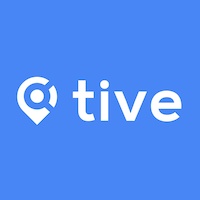Pünktlich und vollständig: Erreichen der OTIF-Ziele mit Echtzeit-Tracking

October 3, 2025
October 24, 2025
x min. Lesedauer

Ihre Ladung Tiefkühlkost hat Memphis um 6:00 Uhr verlassen und ist um 14:00 Uhr bei Walmart fällig. Etwa bei Meilenmarkierung 147, die Kühleinheit beginnt zu arbeiten—wenn die Temperatur von -10 bis zur Gefahrenzone steigt.
Das weiß noch niemand. Der Fahrer fährt weiter, die Zentrale sieht einen Punkt, der sich nach Norden bewegt. Alles sieht perfekt aus.
Drei Stunden später kommt die Realität. Die Ladung ist ruiniert — und Walmart lehnt sie am Dock ab.
Es fallen 3% Ihrer Rechnung an, zuzüglich der Regalfläche, für die Sie sich sechs Monate lang gekämpft haben.
Blinde Flecken wie dieses Wrack zielt OTIF überall ab, wo man hinschaut. Pharmazeutika kochen an den Laderampen. Elektronik saugt Feuchtigkeit auf. Hochwertige Sendungen verschwinden zwischen den Kontrollpunkten. Katastrophen werden erst entdeckt, nachdem sie passiert sind, sie werden nicht verhindert, und die Strafen werden immer härter.
Die einzige Hoffnung, diese Lücke zu schließen, besteht darin, sich zu umarmen Tracking in Echtzeit—und wir können erklären, wie und warum.
Wie Tive aus OTIF Panic eine vorhersehbare Leistung macht
Du hast Sensoren an Ihren Sendungen jetzt. Großartig. Aber Rohdaten ohne Maßnahmen geben Ihnen nur einen Platz in der ersten Reihe, um zuzusehen, wie sich die Strafen häufen. Der Unterschied zwischen dem Wissen, dass Ihr Kühlgerät ausgefallen ist, und dem tatsächlichen Speichern der Ladung besteht darin, dass drei Funktionen zusammenarbeiten: genaue ETAs die ständig aktualisiert werden, Benachrichtigungen, die auf Ihrem Telefon eintreffen bevor Probleme explodieren, und Routing-Informationen, die Sie von Problemen fernhalten.
Live-ETAs, die Mehrwert bringen
fünf Tracker Streamen Sie Standort- und Zustandsdaten direkt in Ihr Dashboard und übertragen Sie sie dann über das System, das Sie bereits verwenden. Diese ETAs passen sich ständig an die tatsächlichen Bewegungsmuster an, nicht an den von Ihrem Mobilfunkanbieter versprochenen Fantasy-Timeline. Wenn Ihr LKW auf eine unerwartete Baustelle stößt, wird die voraussichtliche Ankunftszeit sofort aktualisiert, und Sie sehen, dass die Walmart-Lieferung um 14:00 Uhr ins Rutschen gerät — aber jetzt haben Sie Zeit, anzurufen und einen anderen Termin zu vereinbaren. Sichtbarkeit der Lieferungen in Echtzeit bedeutet, dass die Eingangstür nicht verschlossen wird, wenn Ihr Fahrer drei Stunden zu spät kommt... weil Sie den Termin bereits verschoben haben.
Benachrichtigungen, die Ihnen Zeit zum Handeln geben
Geofences erkennen Probleme in der Sekunde, in der sie auftreten. Wenn Ihr Truck das Vertriebszentrum nie verlässt, du erfährst es sofort, —nicht vier Stunden nachdem die Reise hätte beginnen sollen. Der Fahrer macht einen ungeplanten Umweg und Ihr Telefon klingelt, während Sie ihn noch auf die Route bringen können. Die Temperatur schleicht sich langsam dem Sperrbereich zu und Sie rufen den Fahrer an, bevor die gesamte Ladung kaputt geht.
Intelligentere Routen basierend auf dem, was tatsächlich passiert
Jede abgeschlossene Sendung fließt in Ihre Routing-Entscheidungen ein. Geben Sie Ground Truth Daten zeigt, auf welchen Strecken regelmäßig Verspätungen auftreten, welche Fahrspuren heiß sind und an welchen Rastplätzen es häufig zu Verzögerungen kommt Ladungsdiebstahl, und welche Spediteure tatsächlich die Fahrpläne einhalten — anstatt Lieferfenster wie Vorschläge zu behandeln. Unternehmen, die diese Sichtbarkeit als Routenplaner nutzen Kraftstoffkosten senken zweistellig, während ihre OTIF-Werte steigen. Das ist kein Wunder Kroger und andere große Lebensmittelhändler fordern Sie jetzt Standort- und Temperaturdaten in Echtzeit für alle eingehenden Ladungen an, da Sendungen, bei denen Probleme vermieden werden, nicht in letzter Minute gespeichert werden müssen.
Wie Crane Solutions verspätete Gebühren für Millionen-Dollar-Sendungen eliminierte
Crane Solutions transportiert Ladungen im Wert von 100.000 bis mehreren Millionen Dollar pro Lkw, darunter Serverracks, Sonnenkollektoren, Satelliten und Designerkleidung. So war es verständlicherweise so, dass Josh Hussin, der Leiter der Kundenentwicklung bei Crane, es langsam leid war, bei hochwertigen Lieferungen verspätete Strafen zu kassieren. Er dachte sich, warum nicht führe ein dreimonatiges Pilotprojekt durch Neun spezielle Anhänger verfolgen, um zu sehen, ob eine bessere Sicht die Probleme mit der pünktlichen Lieferung von Crane lösen könnte? Die Ergebnisse sprachen für sich.
- Tracking-Daten wurden direkt in das TMS aufgenommen: Crane integrierte Tive direkt in sein bestehendes Transportmanagementsystem, sodass die Disponenten sehen konnten, wie Sendungen in ihrem regulären Arbeitsablauf ins Hintertreffen gerieten. Die detaillierten Aktualisierungen zeigten ihnen genau, wann die Ladungen zu spät liefen. So hatten sie Zeit, Probleme zu beheben, anstatt es am Auslieferungsdock herauszufinden.
- Das Totzonen-Problem wurde behoben: Hussin entdeckte, dass Tive-Tracker sogar in diesen frustrierenden Todeszonen in den USA funktionieren, wo Sendungen normalerweise stundenlang verschwinden. Da die Tracker alle 30 Minuten pingen, hielten die Einheiten 45 Tage ohne Unterbrechung durch — so wusste Crane immer, ob ihre millionenschweren Ladungen ihre Lieferfenster erreichen würden oder ob Hilfe erforderlich war.
- Aus späten Überraschungen wurden verwaltete Lieferungen: Als die Lieferungen ins Hintertreffen gerieten, rief Crane die Kunden sofort mit neuen ETAs an. Die Empfänger konnten ihre Hafenpläne und Arbeitszeiten anpassen, bevor die Lkws zu spät kamen. Was früher automatische Strafen von 3% auslöste, wurde zu erfolgreich verschobenen Lieferungen, die immer noch die OTIF-Ziele erfüllten.
- Umwege erkannt, die die Lieferzeiten gefährdeten: Jedes unbefugte Öffnen einer Tür löst einen Alarm aus, der anzeigt, wann Fahrer an außerplanmäßigen Orten angehalten haben. Der Kran konnte die Fahrer wieder auf die Route bringen, bevor diese Umwege die Ankömmlinge an ihren Lieferfenstern vorbeidrängten, wodurch sowohl ihre Serviceversprechen als auch ihre Scorecards geschützt wurden.
- Premium-Tracking zu einem Verkaufsargument gemacht: Nachdem Crane bewiesen hatte, dass das System funktionierte, begann Crane, seinen Baukunden und anderen Abteilungen Tive Tracking als Mehrwertdienst anzubieten. Crane hörte auf, sich auf ungenaue Telefonanrufe der Fahrer zu verlassen, und begann, die Art von Sichtbarkeit zu garantieren, die dafür sorgt, dass teure Ladungen pünktlich abgewickelt werden — und die Beziehungen intakt bleiben.
Hören Sie auf, Strafen zuzusehen und beginnen Sie, sie zu verhindern
Sie wissen genau, wie OTIF-Ausfälle passieren. Gleiche Geschichte, anderer Tag. Das Frustrierende ist jedoch, dass unabhängig von der Katastrophe sie wahrscheinlich hätte verhindert werden können, wenn Sie zwei Stunden zuvor davon gewusst hätten. Crane Solutions hat das herausgefunden, als es die Ortung seiner millionenschweren Ladungen in Echtzeit testete — und konnte plötzlich beobachten, wie Verzögerungen auftraten, Temperaturprobleme begannen und unerlaubte Stopps stattfanden.
Tve baute ein gesamte Plattform um dir diese wichtigen Stunden zurückzugeben. Wir überwachen, was OTIF-Ziele tötet — Temperaturschwankungen, Routenabweichungen, unbefugte Stopps, Schockereignisse — und warnen Sie, sobald etwas vom Kurs abkommt. Unsere Sensoren funktionieren dort, wo andere ausfallen, unsere Batterien halten länger als Ihre längsten Transporte, und unser rund um die Uhr verfügbares Überwachungsteam kümmert sich um Probleme mit dem Spediteur, während Sie die Kundenbeziehung verwalten.
Pharmazeutische Versender und Lebensmittelunternehmen vertraue uns ihre Kühlketten und Compliance-Daten. Hersteller von Elektronikgeräten schützen Sie ihre hochwertigen Ladungen mit TIVE. Der rote Faden ist, dass sie alle ihre OTIF-Ziele erreicht haben, weil sie aufgehört haben, Blindheit als unvermeidlich zu akzeptieren — und stattdessen Echtzeit-Tracking eingeführt haben.
Fangen Sie noch heute mit Tve an und erleben Sie es aus erster Hand.


